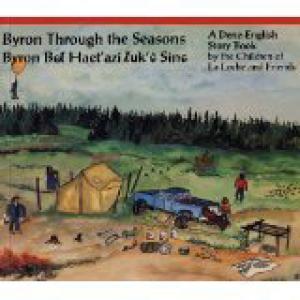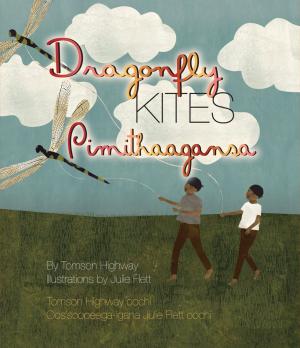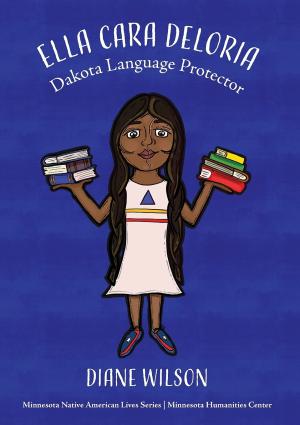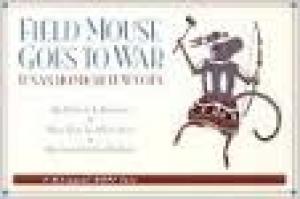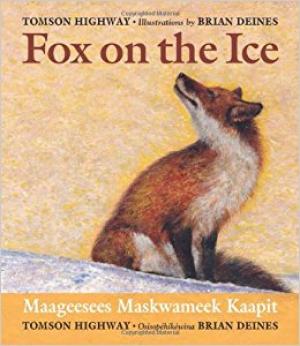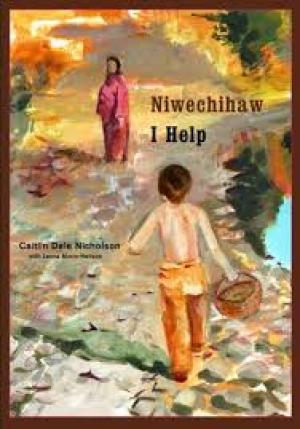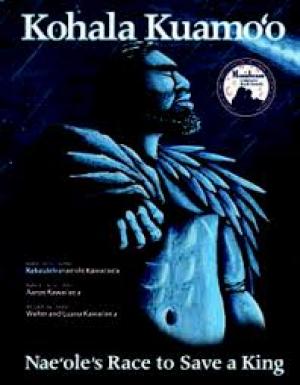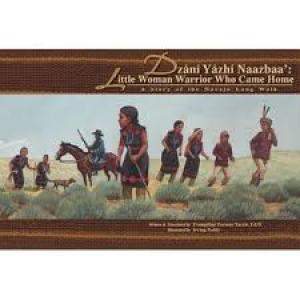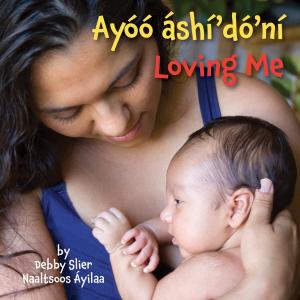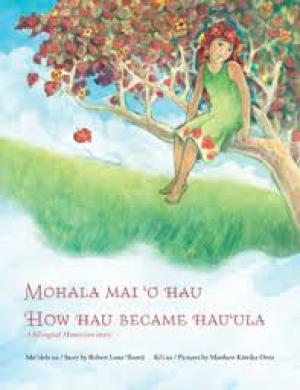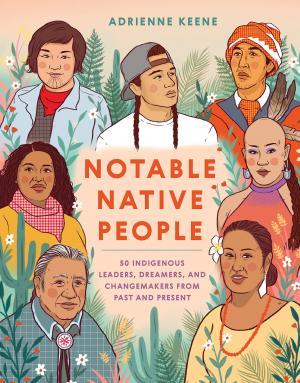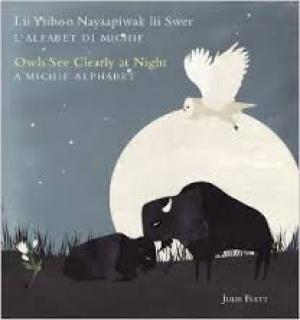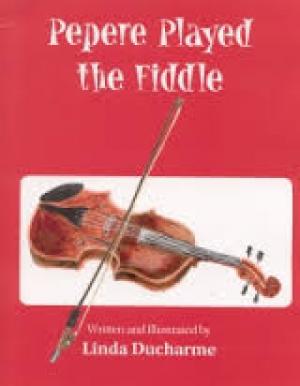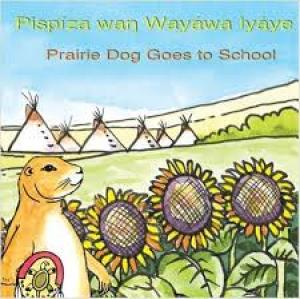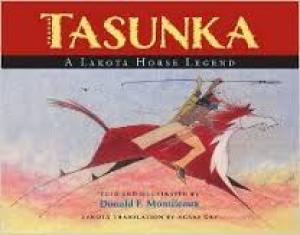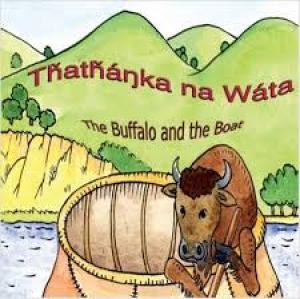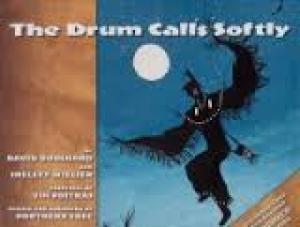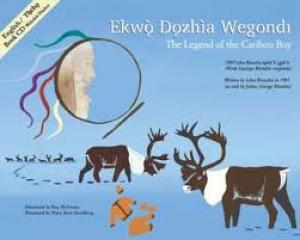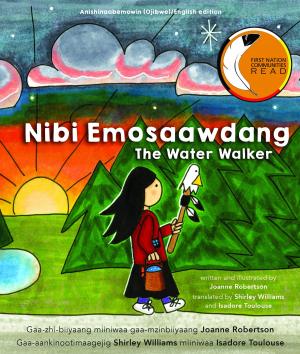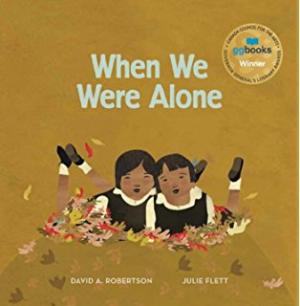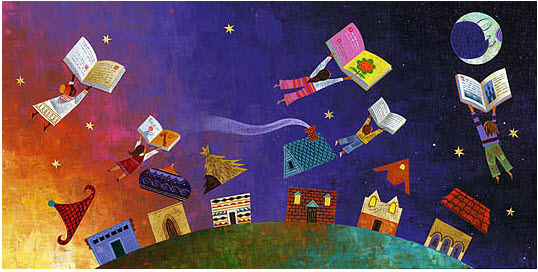Bilingual Books: American Indian/Alaska Native Heritage

These bilingual books present stories told in English and Native languages such as Diné (Navajo), Hopi, Inuktitut, and Lakota. Whether you are looking for books to supplement a heritage language program or a classroom unit, the stories and vocabulary included will be a valuable addition to the classroom and school library.
Other Resources
Find more American Indian/Alaska Native (AIAN) titles through:
- Colorín Colorado's AIAN Booklists and Book Finder
- American Indian Youth Literature Award
- Indigenous Reads Rising (We Need Diverse Books)
- Native Children's and Young Adult Books and Resources (Cynthia Leitich Smith)
- American Indians in Children's Literature (Dr. Debbie Reese)
Arctic Memories
Normee Ekoomiak is an Inuk artist from Northern Quebec. Michael J. Mazza writes, "This book contains full-color reproductions of Ekoomiak's paintings and stitched fabric creations. Each piece of visual art is accompanied by an explanatory mini-essay by the artist. Ekoomiak's vivid art depicts the Inuit people, the natural environment, and the animal life of the Arctic." Bilingual Inuktitut/English.
Byron Through the Seasons: A Dene-English Story Book
Product Description: This Dene-English story book was produced by the students and teachers of Ducharme Elementary School in La Loche, Saskatchewan, with assistance from local advisors and elders. Together, they wrote the story, translated it, and worked on the pictures. Their goal was to highlight some aspects of Dene culture that were vital in the past and are still important today. They wanted to show the continuity of a genuine and successful way of life, and emphasize culturally-significant events and attitudes.
Celebrate My Hopi Corn
"I am a kernel of Hopi corn. I have many sister kernels on my ear of corn. We grow under the warm sun." Celebrate my Hopi Corn written in Hopi and English by Hopi language teacher Anita Poleahla is the story of how corn is planted, cultivated, harvested and prepared for use in the Hopi home. The colorful illustrations by Hopi artist Emmett Navakuku describe the changing seasons and daily activities in a Hopi village.
Celebrate My Hopi Toys
"We know how to count. One lighting stick. Two dancing sticks" Celebrate my Hopi Toys written in Hopi and English by Hopi language teacher Anita Poleahla introduces counting skills to children with patterned text and colorful illustrations of Hopi toys by Hopi artist Emmett Navakuku.
Dragonfly Kites
Dragonfly Kites is the third book in Tomson Highway's magical Songs of the North Wind trilogy. Like Fox on the Ice and Caribou Song, it has a bilingual text, written in English and Cree. Joe and Cody, two young Cree brothers, along with their parents and their little dog Ootsie, are spending the summer by one of the hundreds of lakes in northern Manitoba. Summer means a chance to explore the world and make friends with an array of creatures. But what Joe and Cody like doing best of all is flying dragonfly kites.
Ella Cara Deloria: Dakota Language Protector
Ella Cara Deloria loved to listen to her family tell stories in the Dakota language. She recorded many American Indian peoples' stories and languages and shared them with everyone. She helped protect her people's language for future generations. She also wrote many stories of her own. Her story is a Minnesota Native American life. Minnesota Native American Lives Series.
Field Mouse Goes to War
This traditional Hopi tale recounts the courage and cleverness of a tiny field mouse striving to protect the village from a mighty hawk who is stealing the chickens. It was originally published in 1944 by the Bureau of Indian Affairs, and the drawings are by Hopi artist Fred Kabotie. The book is in English and phonetic Hopi with a pronunciation guide.
Fishing with Grandma
Adventure begins when Grandma takes her two grandchildren out for a trip to the lake. After showing the kids how to prepare for a fishing trip, Grandma and the kids enjoy a day of jigging in the ice for fish. Grandma shows them everything they need to know to complete a successful fishing trip, from what clothes to wear, to how to drill and clear holes in the ice, to how to make a traditional Inuit jigging rod.
Fox On the Ice: Maageesees Maskwameek Kaapit (Songs of the North Wind)
Brothers Joe and Cody are spending a chilly winter afternoon ice fishing with their parents. Cody is helping Papa fish, while Mama and Joe doze in the sled. Suddenly the sled dogs sit up and sniff. A fox is across the lake, her fur as bright as flames. The sled dogs give chase, pulling Mama and Joe along on a wild ride. Written in both English and Cree, Fox on the Ice is a wonderful, lyrical story of celebration from award-winning author Tomson Highway, capturing a passing way of life for future generations.
I Help / Niwechihaw
Product Description: Written and illustrated by members of the Tahltan and Cree nations, this sweet, simple story looks at a very special relationship. A young boy goes for a walk with his kohkom, or grandmother, listening, picking, praying, eating, just as she does. In doing so, he begins to learn the rich cultural traditions and values of his Cree heritage. Bilingual English/Cree.
Itse Selu: Cherokee Harvest Festival
The elements of the long-ago Cherokee harvest festival (Itse Selu) are presented in a fictionalized format as readers follow a young boy's experiences on the last day…Several Cherokee words are introduced, with pronunciations, within the warm, simple story. — School Library Journal
Kohala Kuamo'o: Nae'ole's Race to Save a King
When a prophecy proclaims that the unborn Kamehameha would grow to overshadow the ruling chiefs, his life from birth is in danger. Nae'ole races with the helpless infant across the Kohala district of Hawai'i Island to bring Kamehameha to safety. Three generations of the Kawai'ae'a family join together to give us this unique look at place names of the Kohala area and the important events that shaped Hawaiian history. Bilingual edition.
Little Woman Warrior Who Came Home: A Story of the Navajo Long Walk
Dzanibaa' is alone when U.S. troops swoop down on her family's hogan. Before she can run to safety, a soldier grabs her and puts her on his horse. She is taken to Fort Canby, and from there is forced to walk to Bosque Redondo. For four long years, Dzanibaa' and her family endure incredible hardship and sacrifice. Nevertheless, this time of trial gives Dzanibaa' a profound sense of herself as a Navajo and of the importance of her culture. Bilingual Diné (Navajo)/English.
Loving Me
Whether it is a gentle kiss from mom, a hug from dad, a playful romp with an older brother, or reading with grandpa, babies and toddlers will discover the importance of family relationships in these photographs of Indigenous families. Loving Me features multi-generational family members loving and caring for a child, as they caress and tenderly show their babies and young children how much they are loved.
Me Too
As he helps his grandfather haul firewood, seven-year-old Jared Martell says, "I want to be like my grandpa." In a photo-essay emphasizing the relationship between grandfather and grandson, Jared shows how his activities (getting ice cubes from the fridge, hunting for something under the bed) parallel the traditional activities Grandpa does in the bush. Bilingual Chipewyan-English. — Oyate
Mohala Mai 'o Hau: How Hau Became Hau'ula
Hau, a young girl from Koolauloa, is overshadowed by her beautiful and talented older sisters named Niu, Puhala, and Lehua. But with the help of her kupuna, Hau begins to blossom as she discovers her unique talents and contributions.
Nokum Is My Teacher
Nokum Is My Teacher is the poetic story of a young Indigenous boy, posing questions to his grandmother, his "Nokum", about the wider world beyond the familiarity of their home and community. Through a series of questions, Nokum guides her grandson towards an understanding of his need to fit into and learn more about this large world beyond the reserve.
Notable Native People: 50 Indigenous Leaders, Dreamers, and Changemakers from Past and Present
Celebrate the lives, stories, and contributions of Indigenous artists, activists, scientists, athletes, and other changemakers in this beautifully illustrated collection. From luminaries of the past, like nineteenth-century sculptor Edmonia Lewis—the first Black and Native American female artist to achieve international fame—to contemporary figures like linguist jessie little doe baird, who revived the Wampanoag language, Notable Native People highlights the vital impact Indigenous dreamers and leaders have made on the world.
Owls See Clearly at Night: A Michif Alphabet/Lii Yiiboo Nayaapiwak lii Swer: L'Alfabet Di Michif
Product Description: This picture book is a small glimpse, from A to Z, of some of the sights and sounds of the Michif language and its speakers. The language of the Métis, Michif is a combination of French and Cree with a trace of other regional languages. Once spoken by thousands of people across the prairies of Canada and the northern United States, Michif is now so little spoken that it might disappear within a generation. This alphabet book is part of a resurgence to celebrate and preserve the traditions of the Métis people.
Pepere Played the Fiddle
Youngest readers and listeners are invited to this 1940s-era house party of fiddling, spoon-playing, feet-tapping and dancing. In English with Michif words sprinkled throughout, Pepere Played the Fiddle is a celebration of Métis life and culture. — Oyate
Prairie Dog Goes to School / Pispiza Wan Wayawa Iyaye
Product Description: Prairie Dog Goes to School/Pispiza wan Wayawa Iyaye is a fun bilingual picture book designed for early elementary and preschool children published by the Lakota Language Consortium. On Prairie Dog's way to school, he meets different animals and they join him on this journey. The story is modeled along the lines of the classic Lakota tale, "Turtle Goes on the Warpath." Children learn basic elements of the Lakota language, including verbs of travel, sentence structure, animals, and numbers.
Tasunka: A Lakota Horse Legend
Product Description: Curiosity leads a young warrior to track a new animal that leads him far from home, but at last he finds a herd of strange new creatures: horses that shimmer with color and run swift as the wind. The Lakota capture and tame them, and the people grow rich and powerful as they rule the Plain with their newfound strength. Then the Great Spirit, who gave the gift of the horse, takes it away. Written in both English and Lakota, Donald F. Montileaux retells the legend of Tasunka from the traditional stories of the Lakota people.
The Apple Tree
A Cherokee boy plants an apple seed, and as soon as a seedling appears he can see the apple tree it is meant to be. But the little apple tree isn’t so sure. Young and impatient, it begins to doubt its calling, especially after apples fail to appear that first fall. How can the boy convince the tree to give the seasons the time to work their magic? Story in English with Cherokee translation.
The Buffalo and the Boat / Thathanka na Wata
This picture book published by the Lakota Language Consortium is designed for early elementary and preschool children. It tells the entertaining story of a buffalo in his bull boat traveling down the river and meeting friends. Each different animal joins buffalo and they continue down the river until the surprise ending. Bilingual Lakota/English.
The Drum Calls Softly
An elegant addition to any personal, academic, or community library Native American Studies collection, The Drum Calls Softly is an impressively presented picturebook co-authored by David Bouchard and Shelley Willier and superbly illustrated with beautiful paintings by Jim Poitras. The theme drawn from the drumming ceremonies of the Northern Cree and enhanced with the inclusion of an audio CD featuring singing and drumming by Cree performers. The lyrical text is bilingual and features both the original Cree and an English language translation.
The Legend Of Caribou Boy
When a little boy, traveling with his parents and grandparents, has trouble sleeping at night, he realizes that the caribou spirit is so strong in him that he can no longer remain a human. But his connection to his human family is strong also, and so he gives them the gift of the caribou when they are hungry. John Blondin shares the story as told by his father, elder George Blondin (Dene). Bilingual English/Dogrib. — Oyate
The Water Walker / Nibi Emosaawdang (Ojibwa and English Edition)
The story of the determined Ojibwe Nokomis (grandmother) Josephine Mandamin and her great love for Nibi (water). Nokomis walks to raise awareness of our need to protect water for future generations and for all life on the planet. She, along with other women, men and youth, have walked the perimeter of the Great Lakes and along the banks of numerous rivers and lakes. The walks are full of challenges, and by her example Josephine invites us all to take up our responsibility to protect our water, the giver of life, and to protect our planet for all generations.
When We Were Alone
When a young girl helps tend to her grandmother’s garden, she begins to notice things that make her curious. Why does her grandmother have long, braided hair and beautifully coloured clothing? Why does she speak another language and spend so much time with her family? As she asks her grandmother about these things, she is told about life in a residential school a long time ago, where all of these things were taken away. When We Were Alone is a story about a difficult time in history, and, ultimately, one of empowerment and strength.
Multicultural Literature
See more great related resources and videos in our Multicultural Literature section!


